![]()
![]()
![]()
Use LEFT and RIGHT arrow keys to navigate between flashcards;
Use UP and DOWN arrow keys to flip the card;
H to show hint;
A reads text to speech;
38 Cards in this Set
- Front
- Back
- 3rd side (hint)
|
DOCGs of Piemonte
|
Alta Langa DOCG
Asti DOCG Barbaresco DOCG Barbera d'Asti DOCG Barbera del Monferrato Superiore DOCG Barolo DOCG Brachetto d'Acqui DOCG Dolcetto di Diano d' Alba/Diano d' Alba DOCG Dogliani DOCG Dolcetto di Ovada Superiore (Ovada) DOCG Erbaluce di Caluso/Caluso DOCG Gattinara DOCG Gavi (Cortese di Gavi) DOCG Ghemme DOCG Roero DOCG Ruchè di Castagnole Monferrato DOCG |

|
|
|
Alta Langa DOCG
|
•Denominazione: ◦Alta Langa Spumante
◦Alta Langa Spumante Riserva ◦Alta Langa Spumante Rosato ◦Alta Langa Spumante Rosato Riserva •Grape Varieties: ◦Min. 90% combined Pinot Noir and/or Chardonnay ◦Max. 10% other non-aromatic varieties suitable for cultivation in Piemonte •Minimum Alcohol: 11.5% •Method and Pressure: ◦Traditional Method (transvasage permitted) •Aging Requirements: ◦Spumante: Total production process must not be less than 30 months ◦Spumante Riserva: Total production process must not be less than 36 months |
|
|
|
Asti DOCG
|
•Denominazione: ◦Asti/Asti Spumante
◦Asti/Asti Spumante "Metodo Classico" ◦Moscato d'Asti ◦Moscato d'Asti "Vendemmia Tardiva" •Grape Varieties: 100% Moscato Bianco •Method and Pressure ◦Asti "Metodo Classico" must undergo secondary fermentation in the bottle ◦Asti undergoes secondary fermentation in autoclaves (Charmat/Martinotti Method) ◦Moscato d'Asti: maximum 2 bars (not subject to a secondary fermentation) •Aging Requirements: ◦Asti "Metodo Classico": Min. 9 months on the lees ◦The process of secondary fermentation for Asti may not last less than a month ◦Moscato d'Asti "Vendemmia Tardiva" must be aged for at least one year from the date of harvest •Additional Requirements: ◦Chaptalization is forbidden for Moscato d'Asti "Vendemmia Tardiva" |
|
|
|
Asti DOCG
Subzones: |
Canelli,
Strevi, Santa Vittoria d'Alba |
|
|
|
Canelli Subzone
|
Denominazione: Moscato d'Asti
|
|
|
|
Strevi Subzone
|
Denominazione: Moscato d'Asti
|
|
|
|
Santa Vittoria d'Alba Subzone
|
•Denominazione: ◦Moscato d'Asti
◦Moscato d'Asti Vendemmia Tardiva •Minimum/Maximum Alcohol: ◦Moscato d'Asti: 12% (4.5%-6.5% acquired) ◦Moscato d'Asti "Vendemmia Tardiva": 15% (12% acquired) •Aging Requirements (Vendemmia Tardiva): Min. 2 years from January 1 of the year following the harvest •Additional Requirements (Vendemmia Tardiva): Grapes must be partially dried prior to vinification |
|
|
|
Barbaresco DOCG
|
•Communes of Production: Barbaresco, Neive, Treiso (a frazione of Barbaresco), San Rocco Senodelvio (part of Alba)
•Denominazione (Rosso): ◦Barbaresco ◦Barbaresco Riserva ◦Barbaresco with "menzioni geografiche aggiuntive" ("added geographical designation" of one of Barbaresco's subzones, i.e. crus, defined for collective use in 2007 under DOCG regulations) ◦Barbaresco with "menzioni geografiche aggiuntive" and "Vigna" (single vineyard wine, 100% of grapes must come from a named vineyard used in conjunction with a subzone) •Varieties: 100% Nebbiolo •Minimum Alcohol: 12.5% •Aging Requirements: ◦Barbaresco: Minimum 26 months from November 1 of the harvest year (minimum 9 months in wood), may be released after January 1 of the third year following the harvest ◦Barbaresco Riserva: Minimum 50 months from November 1 of the harvest year (minimum 9 months in wood), may be released after January 1 of the fifth year following the harvest Principal Soils: Tortonian calcerous marl |
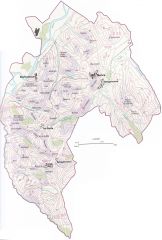
|
|
|
•Barbaresco Crus
|
Vicenziana, Ovello, Montefico, Montestefano, Cole, Ronchi, Cavanna, Secondine, Pajè, Rabajà-Bas, Rabajà, Cars, Faset, Pora, Asili, Martinenga, Trifolera, Tre Stelle, Rio Sordo, Ca' Grossa, Montaribaldi, Roncaglie, Roncagliette, Roccalini, Muncagöta
|
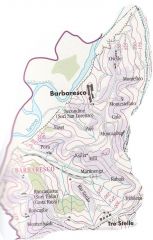
|
|
|
•Neive Crus
|
Cottà, Basarin, San Cristoforo, Currà, Gaia Principe, Fausoni, Gallina, Albesani, San Giuliano, Marcorino, Bordini, Balluri, Starderi, Serracapelli, Serragrilli, Bric Micca, Serraboella, Bricco di Neive, Rivetti, Canova
|
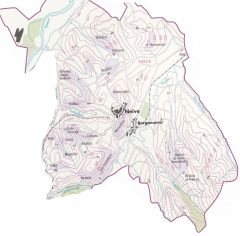
|
|
|
•Treiso Crus
|
Castellizzano, Ferrere, San Stunet, Vallegrande, Marcarini, Pajorè, Giacosa, Casot, Ausario, Rombone, Garassino, Manzola, Valeirano, Rizzi, Nervo, Bricco di Treiso, Bernadot, Rocche Massalupo, Giacone, Montersino, Meruzzano
|
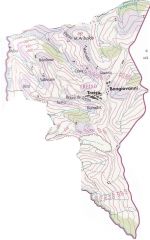
|
|
|
Barbera d'Asti DOCG
|
•Denominazione (Rosso): ◦Barbera d'Asti
◦Barbera d'Asti Superiore ◦Barbera d'Asti Superiore con indicazione della sottozona (with indication of subzone) •Varieties: ◦Barbera d'Asti: 85-100% Barbera, combined maximum 15% of Freisa, Grignolino and Dolcetto ◦Barbera d'Asti Superiore Colli Astiani: 90-100% Barbera, combined maximum 10% Freisa, Grignolino, Dolcetto •Minimum Alcohol: ◦Barbera d'Asti: 12% ◦Barbera d'Asti Superiore: 12.5% ◦Barbera d'Asti Superiore con indicazione della sottozona: 13% •Aging Requirements: ◦Barbera d'Asti: 4 months from November 1 of the harvest year ◦Barbera d'Asti Superiore: 14 months from November 1 of the harvest year, including at least 6 months in oak ◦Barbera d'Asti Superiore Nizza: 18 months from January 1 of the year following harvest, including at least 6 months in wood ◦Barbera d'Asti Superiore Tinella: 24 months from October 1 of the harvest year, including at least 6 months in wood and 6 months in bottle ◦Barbera d'Asti Superiore Colli Astiani: 24 months from October 1 of the harvest year, including at least 6 months in wood and 6 months in bottle •Minimum Planting Density: 3,500 vines per hectare •Maximum Yields: Principal Soils: clay, silt, sand and limestone |
|
|
|
Barbera d'Asti DOCG
Subzones: |
Tinella,
Colli Astiani (Astiano), Nizza |
|
|
|
Barbera del Monferrato Superiore DOCG
|
•Denominazione (Rosso): ◦Barbera del Monferrato Superiore
◦Barbera del Monferrato Superiore "Vigna" •Varieties: minimum 85% Barbera, combined maximum 15% of Freisa, Grignolino, Dolcetto •Minimum Alcohol: 13% •Aging Requirements: minimum 14 months from November 1 of the harvest year, including at least 6 months in oak |
|
|
|
Barolo DOCG
|
◦Almost 90% of the DOCG zone is contained within the five core townships of Barolo, La Morra, Castiglione Falletto, Serralunga d'Alba, and Monforte d'Alba
•Denominazione (Rosso): ◦Barolo ◦Barolo Riserva ◦Barolo with "menzioni geografiche aggiuntive" ("added geographical designation" of one of Barolo's crus, a subzone legally defined for collective use in 2010 under DOCG regulations) ◦Barolo with "menzioni geografiche aggiuntive" and "Vigna" (single vineyard wine, 100% of grapes must come from a named vineyard used in conjunction with a subzone) ◦Barolo Chinato (aromatized) •Varieties: Nebbiolo •Minimum Alcohol: 13% •Aging Requirements: ◦Barolo: 38 months from November 1 of the harvest year, including 18 in wood ◦Barolo Riserva: 62 months from November 1 of the harvest year, including 18 in wood Principal Soils ◦Tortonian calcareous marl (Barolo, La Morra) ◦Helvetian sandstone (Serralunga d'Alba, Monforte d'Alba, Castiglione Falletto |
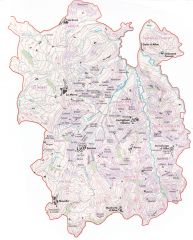
|
|
|
Barolo Crus
|
Albarella, Bergeisa, Bricco San Giovanni, Bricco Viole, Brunate, Boschetti, Castellero, Cannubi, Cannubi Boschis, Cannubi Muscatel, Cannubi San Lorenzo,Cannubi Valletta, Castellero, Cerequio, Coste di Vergne, Coste di Rose, Crosia, Ducrà, Fossati, La Villa, La Volta, Le Coste, Liste, Monrobiolo, Paiagallo, Preda, Ravera, Rivassi, Ruè, San Pietro, San Ponzio, San Lorenzo di Barolo, Sarmassa, Terlo, Via Nuova, Vignane, Nonchetta, Zuncai, Zonchetta, Zoccolaio
|

|
|
|
La Morra Crus:
|
Bricco Cogni, San Giacomo, Ascheri, Sant'Anna, Castagni, Brandini,Berri, Serradenari, Mantoetto, Roere di Santa Maria, Silio, Roncaglie, Bettolotti, Rive, Bricco Chiesa, Galina, Capalot, Santa Maria, Serra dei Turchi, Bricco San Biagio, Roggeri, Rocchettevino, Annunziata, Arborina, Gattera, Bricco Manescotto, Bricco Manzoni, Bricco Luciani, Conca, Bricco Rocca, Giachini, Rocche dell'Annunziata, Torriglione, Boiolo, La Serra, Brunate, Cerequio, Case Nere, Fossati, Bricco Ambrogio
|
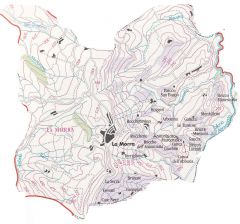
|
|
|
Serralunga d'Alba Crus
|
Teodoro, Ceretta Piani, Cereetta, Bricco Ceretta, Prapò, Gianetto, Bricco Voghera, Brea, Cerrati, Broglio, Colombaro, San Bernardo, Serra, Badarina, Sorano di Diano d'Alba, Fontanafredda, Carpegna, Sorano, San Rocco, Costabella, Cappalotto, Baudana, Meriame, Gabutti-Marianot, Gabutti, Parafada, Lazzarito, Le Turne, Margheria, Marenca, Rivette, Colombaro, Serra, Vigna Rionda, Collaretto, Briccolina, Ornato, Falletto, Boscareto, Francia, Arione
|

|
|
|
Castiglione Falletto Crus
|
Parussi, Montanello, Crocetta, Bricco Boschis, Monprivato, Codana, Vignolo, Solanotto, Valentino, Brunella, Fiasco, Altenasso, Villero, Serra, Mariondino, Valletti, Pugnane, Piantà, Cerroni, Pernanno, Scarrone, Pira, Lipulot, Rocche
|
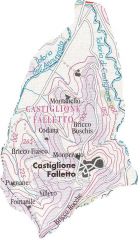
|
|
|
Monforte d'Alba Crus
|
Pugnane, Munie, Bussia, Bussia Sotana, Bussia Soprana, Dardi, Pianpolvere, San Giovanni, Visette, Arnulfo, Fantini, Corsini-Sciarè, San Pietro, Manzoni, Gramolere, Santo Stefano di Perno, Disa, Cerretta, Castelletto, Pressenda, La Villa, Grassi, Gavarini, Ginestra, Mosconi, Conterni, Le Coste, Ravera
|
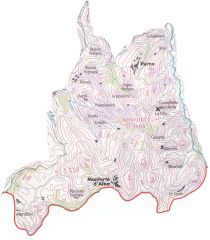
|
|
|
Novello Crus
|
Bergera-Pezzole
Cerviano-Merli Ciocchini-Loschetto Corini-Pallaretta Panerole Sottocastello di Novello |
|
|
|
Verduno cru
|
Boscatto
Breri Campasso Massara Monvigliero Neirane Pisapola Riva Rocca Rocche dell'Olmo Rodasca San Lorenzo di Verduno |
|
|
|
Grinzane Cavour Cru
|
Bablino
Borzone Canova Castello Garretti Gustava La Corte Raviole |
|
|
|
Other Barolo Cru
|
Bricco Ambrogio - Roddi
Gallaretto - Diano d'Alba La Vigna - Diano d'Alba Mantoetto - Cherasco |
|
|
|
Brachetto d'Acqui (Acqui) DOCG
|
•Denominazione: ◦Rosso (maximum pressure 2 bars)
◦Rosso Spumante (Traditional or Charmat Method) ◦Rosso Passito •Varieties: ◦Min. 97% Brachetto ◦Max. 3% other varieties suitable for cultivation in Piedmont •Minimum Residual Sugar: 50 g/l (Passito only) •Aging Requirements: ◦Passito: May not be released before October 1 of the year following the harvest |
|
|
|
Dolcetto di Diano d' Alba/Diano d' Alba DOCG
|
•Denominazione (Rosso): ◦Dolcetto di Diano d' Alba
◦Dolcetto di Diano d' Alba "Vigna" ◦Dolcetto di Diano d' Alba Superiore ◦Dolcetto di Diano d' Alba Superiore "Vigna" •Varieties: 100% Dolcetto •Minimum Alcohol: ◦Dolcetto di Diano d' Alba 11.5% ◦Dolcetto di Diano d' Alba "Vigna" 11.5% ◦Dolcetto di Diano d' Alba Superiore 12% ◦Dolcetto di Diano d' Alba Superiore "Vigna" 12.5% •Aging Requirements: ◦Normale: release January 1st of the year following harvest ◦Superiore: release September 1st of the year following harvest Principal Soils: calcareous clay and limestone ◦Planted on hills not to exceed 500m and without a northern orientation |
|
|
|
77 SORI DEL DIANO D'ALBA DOCG
|
1.Vigna della Lepre
2.Sorì dei Poggi 3.Sorì della vigna 4.Sorì del Montagrillo 5.Bric del Camparo 6.Teologato 7.Costafiore 8.Sorì del Luma 9.Sorì dei Servetti 10.Sorì dei Crava 11.Bric dei Gatti 12.Sorì del Cascinotto 13.Sorì del Bartu 14.Cascina Arione 15.Ciabot Rus 16.Sorì del Pradurent 17.Sorì della Briccola 18.Sant'Eurosia 19.Colombaro della Briccola 20.Parisa 21.Gabriel 22.Bruni 23.Cristina 24.Sorì del Carzello 25.Santa Lucia 26.Cascina Manzano 27.Sorì di San Quirico 28. Sorì del Bric della Biria 29.La Fajà 30.Sorì del Servaj 31.Sorì dei Piani 32.Sorì dei Pittatori 33.Sorì della Riccheria 34.Vigna Tampa 35.Cascina San Sebastiano 36.Cascina Carbone 37.Cascina Flino 38.Cascina Benevello 39.Sorì degli Abelloni 40.Sorì del Bric Maiolica 41.Sorì del Romino 42.Sorì della Piadvenza 43.Cascina Saliceto 44.La Rocca 45.SorìdellaMadonnina 46.Sorì della Rivolia 47.Sorì del Moncolombetto 48. Sorì del Rabalotto 49. Sorì della Sorda 50.Sorì dei Pasquali 51.Sorì del Parisio 52.Sorì del Montadino 53.Sorì del Rapalino 54.Sorì della Pezzea 55.Sorì di San Calogero 56.Sorì del Ricchino 57.Sorì della Sorba 58. Cascina Robino Soprano 59.Cascina Robino sottano 60.Sorì del Mongrande 61.Sorì delle Cecche 62.Bric del Ciabot 63.Sorì dei Berfi 64.Sorì dei Ciapa 65.Sorì del Genesio 66.Autin Grand 67.Sorì del Bonorej 68.Bric del Gerlotto 69.Sorì del Sot 70.Sorì dei Fossà 71. Sorì degli Ubert 72. Sorì della Regnura 73. Autin Souvé 74. Autinot 75. Sorì della Mattea 76.Vigna del Bric della Mattea 77.Cascina Langhetto |
|
|
|
Dogliani DOCG
|
•Denominazione (Rosso): ◦Dogliani
◦Dogliani Superiore •Varieties: 100% Dolcetto •Minimum Alcohol: ◦Dogliani: 12% ◦Dogliani Superiore: 13% •Aging Requirements: ◦12 months from October 15 of the harvest year (not released until November 1 of the year following harvest) Principal Soils: calcareous or siliceous clay |
|
|
|
Dolcetto di Ovada Superiore (Ovada) DOCG
|
•Denominazione (Rosso): ◦Dolcetto di Ovada Superiore
◦Dolcetto di Ovada Superiore Riserva ◦Dolcetto di Ovada Superiore "Vigna" •Varieties: 100% Dolcetto •Minimum Alcohol: ◦Dolcetto di Ovada Superiore: 12.5% ◦Dolcetto di Ovada Superiore "Vigna": 13% •Aging Requirements: ◦Dolcetto di Ovada Superiore: 12 months from November 1 of the harvest year ◦Dolcetto di Ovada Superiore "Vigna": 20 months from November 1 of the harvest year ◦Dolcetto di Ovada Superiore Riserva: minimum 24 months •Principal Soils: clay, tufa, limestone |
|
|
|
Erbaluce di Caluso/Caluso DOCG
|
•Denominazione: ◦Bianco
◦Spumante (Traditional Method) ◦Passito ◦Passito Riserva •Varieties: 100% Erbaluce •Minimum Alcohol: ◦Bianco: 11% ◦Spumante: 11.5% ◦Passito: 17% (natural total alc. after drying) •Minimum Residual Sugar (Passito only): 70 g/l •Aging Requirements: ◦Spumante: Minimum 15 months on the lees ◦Passito: 36 months from November 1 of the harvest year ◦Riserva: 48 months from November 1 of the harvest year |
|
|
|
Gattinara DOCG
|
•Denominazione (Rosso): ◦Gattinara
◦Gattinara Riserva •Varieties: minimum 90% Spanna, maximum 10% in total of Bonarda di Gattinara and Vespolina (Vespolina cannot exceed 4%) •Minimum Alcohol: ◦Gattinara: 12.5% ◦Gattinara Riserva: 13% •Aging Requirements: ◦Gattinara: minimum 3 years, including one year in wood, from December 1 of the harvest year ◦Gattinara Riserva: 4 years, including two years in wood, from December 1 of the harvest year |
|
|
|
Gavi (Cortese di Gavi) DOCG
|
•Denominazione (Bianco): ◦Gavi/Cortese di Gavi (Tranquillo)
◦Gavi/Cortese di Gavi Riserva ◦Gavi/Cortese di Gavi Frizzante ◦Gavi/Cortese di Gavi Spumante ◦Gavi/Cortese di Gavi Spumante Metodo Classico Riserva •Varieties: 100% Cortese •Minimum Alcohol: ◦Gavi: 10.5% ◦Gavi Riserva: 11% •Aging Requirements: ◦Tranquillo wines may display only "slight traces" of wood flavors ◦Spumante Metodo Classico must be aged for a min. 2 years (including at least 18 months on the lees) from October 15 of the year of harvest Principal Soils: Limestone-rich clays |
|
|
|
Ghemme DOCG
|
•Denominazione (Rosso): ◦Ghemme
◦Ghemme Riserva •Varieties: minimum 75% Spanna, combined maximum 25% Vespolina and Uva Rara •Minimum Alcohol: ◦Ghemme: 12% ◦Ghemme Riserva: 12.5% •Aging Requirements: ◦Ghemme: minimum 3 years, including a minimum 20 months in wood and 9 months in bottle from November 1 of the harvest year ◦Ghemme Riserva: minimum 4 years, including a minimum 25 months in wood and 9 months in bottle from November 1 of the harvest year |
|
|
|
Roero DOCG
|
•Denominazione: ◦Roero (rosso)
◦Roero Riserva (rosso) ◦Roero Arneis (bianco) ◦Roero Arneis Spumante •Varieties: ◦Roero: minimum 95% Nebbiolo, Maximum 5% other non-aromatic red grapes of Piemonte ◦Roero Arneis: minimum 95% Arneis, maximum 5% other non-aromatic white grapes of Piemonte •Minimum Alcohol: ◦Roero: 12.5% ◦Roero Arneis: 11% ◦Roero Arneis Spumante: 11.5% •Aging Requirements: ◦Roero: minimum 20 months from November 1 of the harvest year, including a minimum 6 months in wood (may be released from July 1 of the second year following the harvest) ◦Roero Riserva: minimum 32 months from November 1 of the harvest year, including a minimum 6 months in wood (may be released from July 1 of the third year following the harvest) Principal Soils: clay and limestone |
|
|
|
Ruchè di Castagnole Monferrato DOCG
|
•Denominazione: ◦Rosso
◦Rosso with indication of "vigna" •Varieties: 90% Ruchè, plus max. 10% combined Barbera and Brachetto •Minimum Alcohol: 12.5% |
|
|
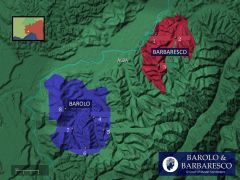
|
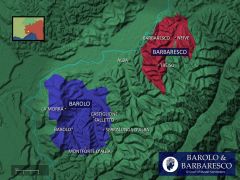
|
|
|

|
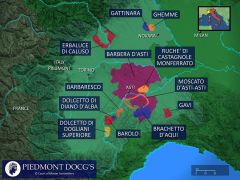
|
|
|
|
Geography
|
surrounded on three sides by the Alps
Po river Tanaro river runs along barbaresco and its tributaries Talloria dell'Annunziata and Tollaria di Castiglione split around Castiglione Falletto |
|

